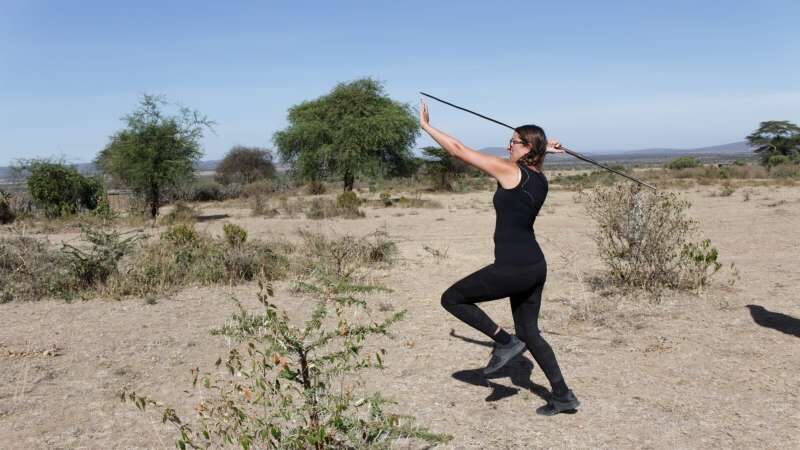Visiting a Maasai village is often marketed as an authentic cultural experience, offering travelers the opportunity to step into a world seemingly untouched by modernity. Yet, as tourism grows, the question arises: is this experience truly a window into Maasai life, or has it become a commercialized venture that diminishes its authenticity?
The Case for Ethical Tourism
Many argue that visiting a Maasai village supports cultural preservation and provides much-needed economic benefits to communities that traditionally rely on pastoralism. With modernization and land pressures affecting their semi-nomadic lifestyle, some Maasai villages have turned to tourism as an alternative livelihood. A well-organized village visit can provide direct income to the community, allowing them to fund education, healthcare, and other essentials.
From an ethical standpoint, these visits offer a platform for cultural exchange. Engaging in conversation with the Maasai, participating in their traditional dances, and even stepping inside their manyattas (small homes made of mud and cow dung) can foster greater understanding between cultures. Travelers gain insight into the challenges the Maasai face—ranging from land rights issues to balancing tradition with modernity—while the Maasai gain economic benefits and exposure to the wider world.
9 Ways to Have an Ethical/Responsible Visit to a Masai Village:
When visiting a Maasai village, responsible tourism is essential to ensure that your presence is respectful, mutually beneficial, and culturally sensitive. Here are expert tips to help you engage in an ethical and meaningful way:
1. Choose Community-Run or Ethical Tour Operators
Opt for tours that are organized by the Maasai community or those that clearly state how the revenue benefits the villagers. Look for tours where a portion of the fees goes towards education, healthcare, or conservation initiatives.
2. Avoid Exploitative or Staged Experiences
Be cautious of tours that feel overly commercialized, where interactions seem rehearsed rather than organic. Research in advance to find authentic experiences, such as Maji Moto Eco Camp, which is known for deep cultural immersion rather than just quick visits.
3. Ask for Permission Before Taking Photos
Not all Maasai are comfortable being photographed, and some may expect payment. Always ask before taking a picture and respect their response. A good approach is: “Naweza kupiga picha?” (May I take a photo?) in Swahili.
4. Dress Modestly and Respect Local Norms
While the Maasai wear traditional shukas, visitors should dress modestly as a sign of respect. Avoid revealing clothing and opt for neutral, respectful attire.
5. Engage with an Open Mind and Ask Meaningful Questions
Instead of treating the visit as just a sightseeing stop, take the time to learn about the Maasai’s traditions, beliefs, and challenges. Ask thoughtful questions like:\n
- “How has modernization impacted your traditions?”
- “What role does cattle play in your community today?”
- “How do young Maasai learn traditional skills?”
6. Be Culturally Aware During Interactions
- Men and women often have distinct roles in Maasai society; be mindful of this when engaging with individuals.
- If offered a traditional greeting (such as touching heads or shaking hands in a certain way), observe and follow their lead.
- Avoid imposing personal beliefs on topics like polygamy, diet, or medicine—these are deeply ingrained cultural aspects.
7. Support the Community Ethically
If you want to support the Maasai, do so in a way that empowers rather than creates dependency:\n
- Buy handmade crafts directly from artisans rather than middlemen.
- Donate responsibly—contributing to school supplies or medical programs is more impactful than giving money to individuals.
8. Decline Sales Respectfully If You Don’t Want to Buy
If you don’t wish to purchase crafts, politely say: “Asante sana, lakini sitanunua leo” (Thank you very much, but I will not buy today). Avoid prolonged bargaining if you aren’t serious about purchasing.
9. Be Mindful of Environmental Impact
- Avoid bringing plastic bottles or single-use plastics into the village.
- If you carry snacks, do not leave behind wrappers—dispose of them responsibly.
- If trekking to a remote village, follow Leave No Trace principles.
Concerns Over Commercialization
On the other hand, there is growing concern that Maasai village tours have become increasingly commercialized, reducing genuine cultural interactions to staged performances. Reports from travelers indicate that some village visits feel more like rehearsed tourist shows rather than authentic insights into daily life. The traditional dances, the beaded handicrafts, and the structured storytelling sessions can sometimes feel scripted, designed more for visitor entertainment than cultural education.
Additionally, some villages pressure tourists to purchase souvenirs or make donations, leading to uncomfortable situations where visitors feel obliged to spend money. While buying handmade beadwork can be a great way to support the community, experiences that prioritize selling over storytelling can leave travelers questioning the true purpose of their visit.
I have seen the ‘over-commercialization’ aspect first-hand:
I have observed in a lot of reviews that some tours feel rushed and overly commercialized, with villagers focusing more on selling their crafts immediately after guests have paid the entry fee.
I agree with this assessment, as I recently took some of our guests at Kambu Mara Camp to one of the manyattas near Sekenani Gate. The entire experience lasted about 40 minutes, with each guest charged $50. While the interaction was insightful, it felt hurried, and the emphasis on selling crafts made the visit feel transactional rather than immersive.
10 Ways to Politely Decline Offers to Buy Stuff in a Masai Village:
If you’re visiting a Maasai village and want to respectfully decline solicitations to buy items without offending your hosts, here are some expert tips to navigate the situation gracefully:
1. Show Appreciation First
Before declining, acknowledge the effort and craftsmanship of the items. A simple “These are beautiful, you are very talented” goes a long way in showing respect.
2. Use Polite but Firm Declinations
Instead of a blunt “no,” opt for more culturally sensitive phrases such as:
- “Asante sana, but I’m not able to buy today.” (Swahili for “Thank you very much.”)
- “I really appreciate this, but I’m traveling light and can’t carry more items.”
- “These are wonderful, but I have to stay on a budget.”
3. Avoid Engaging in Haggling If You’re Not Interested
Once you start negotiating, it signals potential interest. If you don’t plan to buy, politely decline at the start rather than after a back-and-forth on price.
4. Keep Moving or Gently Redirect the Conversation
If you linger, sellers may assume you’re still considering a purchase. You can say, “I’d love to learn more about your traditions,” or ask about their beadwork techniques to shift the focus from a sale to cultural exchange.
5. If Pressured, Use a More Direct but Respectful Approach
If persistent sellers keep trying, a firm yet warm response like:
- “I respect your work, but I truly cannot buy today.”
- “I already purchased something earlier, but thank you so much.”
6. Avoid Eye Contact with Items You’re Not Interested In
If you start picking up and examining too many items, it may signal intent to buy. Stick to browsing casually without committing interest.
7. Set a Clear Boundary with Group Sellers
If multiple people approach, acknowledge them collectively and politely say:
- “I appreciate all your work, but I won’t be buying today. Asante!”
8. Be Prepared for Emotional Appeals
Some sellers may emphasize personal or community hardships. While empathy is important, you can kindly express, “I understand, and I support in other ways when I can.” If you do want to help but not buy, consider donating to a village-run initiative instead.
9. Have a Local Guide Help You Navigate
If unsure, a local guide can assist in navigating these interactions. Some guides will help explain to villagers that you are visiting primarily for cultural exchange rather than shopping.
10. If You Want to Support, Consider a Small Purchase or Tip
If declining multiple offers feels uncomfortable, buying a small, inexpensive item (like a bracelet) or tipping for the village experience can be a compromise.
By being polite, appreciative, and firm, you can navigate Maasai village solicitations with respect while maintaining a positive cultural exchange.
Luckily, Maji Moto Eco Camp Cultural Tours Reclaims the Masai Village Visits’ Reputation:
However, I have also heard excellent feedback about the cultural immersion tour at Maji Moto Eco Camp. Unlike the quick and scripted experiences at some villages, Maji Moto offers an in-depth look into the Maasai way of life.

Visitors engage in meaningful conversations, try their hand at traditional skills like spear throwing and fire-making, and participate in fireside storytelling at night. The Adumu dance, a signature aspect of Maasai warrior culture, is also part of the experience, creating a more engaging and educational visit.

If you truly want an authentic and enriching experience, I highly recommend visiting Maji Moto Eco Camp.

Check out this blog by Christina Campo of Intrepid Travels titled ‘Why a visit with the Maasai people was the highlight of my Kenya trip‘ and her review of the Maji Moto Masai Village Tour.
Striking a Balance: How to Ensure an Ethical Visit
For those concerned about ethical tourism, choosing the right Maasai village visit is crucial. Here are a few tips to ensure a more genuine and mutually beneficial experience:
- Seek out community-run initiatives: Some Maasai villages manage their own tourism ventures, ensuring that profits go directly to the community rather than third-party operators.
- Research in advance: Reading reviews and seeking recommendations can help you avoid overly commercialized experiences.
- Ask questions: Engage in meaningful conversations about the Maasai’s daily life, their challenges, and their hopes for the future, rather than just watching performances.
- Be respectful: Avoid taking intrusive photos, and always ask permission before capturing images of people.
- Support sustainably: If purchasing souvenirs, do so directly from artisans rather than middlemen to ensure fair compensation.
Final Thoughts: Worth It or Not?
Ultimately, whether a Maasai village visit is ethical or commercialized depends on how the experience is structured. When done right, these visits can be enriching for both visitors and hosts, fostering cultural appreciation and economic sustainability. However, when reduced to a mere transaction—where tourists pay for an orchestrated show—the essence of the experience is lost.
For those seeking an authentic and responsible travel experience, taking the time to choose ethical operators and engaging genuinely with the community can make all the difference. A well-managed Maasai village visit can indeed be worth it, provided that it respects both the traditions of the Maasai and the dignity of those who welcome visitors into their world.
Check out this guide on Masai Village Tour to understand what to expect, fees, and booking.

